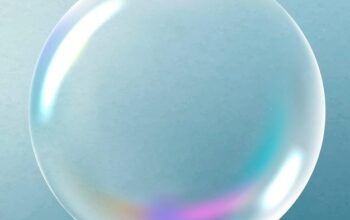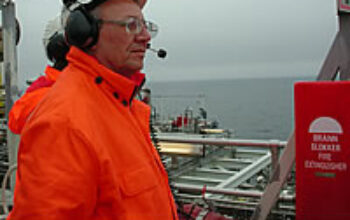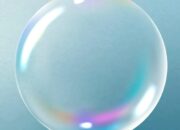Bubbles have long captivated scientists, from their delicate physical manifestations to their integral roles in various chemical processes. Recently, a prominent figure in the field of bubble fusion research has made headlines, facing allegations of scientific misconduct that threaten to overshadow his contributions to a niche yet intriguing area of study. This situation raises pivotal considerations surrounding integrity, accountability, and the inherent complexities of scientific inquiry.
At the crux of the issue lies the researcher’s appeal against charges of misconduct, a process that opens a window into the often tumultuous world of scientific ethics. Misconduct allegations, particularly in pioneering research areas like bubble fusion, can severely impede career progress and public trust in scientific endeavors. The researcher argues that the accusations stem from misinterpretations of experimental results, revealing a disturbing trend wherein innovative investigations may be stifled by institutional rigidity.
Bubble fusion, or sonofusion, refers to the phenomenon wherein bubbles formed in a liquid medium through ultrasonic waves exhibit the potential for nuclear fusion under certain extreme conditions. This process, while long debated within scientific circles, holds the promise of harnessing vast amounts of energy, presenting a tantalizing alternative to conventional energy sources. However, the complex interplay of variables inherent in bubble dynamics complicates validation of experimental outcomes. Therefore, researchers must exercise rigorous scrutiny of methodologies and results, always mindful of the potential for biases to creep into their investigations.
The appeal process serves as a critical juncture for the researcher involved. It grants an opportunity to rectify perceived injustices and underscores a broader discourse on the accountability mechanisms in academia. The resolution of this case will possess implications not only for the individual researcher but also for the collaborative processes that govern scientific progress. In navigating the appeals system, the researcher provides a compelling narrative that invites reflection on the inherent challenges faced by those at the forefront of innovative research.
Readers of this discourse can anticipate exploring a confluence of topics. Foremost will be the underpinnings of bubble fusion itself. Delving into the mechanics of the phenomenon invites an examination of cavitation, where rapid changes in pressure cause microscopic bubbles to form, expand, and collapse. This cycle of creation and annihilation is central to the energy release associated with sonofusion, engendering a discussion steeped in thermodynamics, fluid mechanics, and nuclear physics.
Moreover, this narrative transcends mere technicalities; it delves bravely into questions of scientific integrity. The ethical frameworks guiding researchers demand adherence to rigorous standards of transparency and reproducibility. The misconduct allegations levied against the researcher encapsulate the ethical dilemmas that permeate modern scientific inquiry. When experiments yield conflicting results or challenge established paradigms, researchers may find themselves embroiled in contentious debates. The investigator’s appeal not only seeks to overturn individual charges but also alludes to a systemic need for clearer guidelines and protections for pioneering researchers.
In driving the discussion, one must consider the societal implications of bubble fusion technology. This research stands at a potential crossroads, offering a glimpse into an era defined less by scarcity of resources and more by sustainable energy solutions. Widespread adoption of bubble fusion could revolutionize energy production, drastically reducing the carbon footprint. Thus, the allegations against the researcher extend their reach beyond personal ramifications; they touch upon the future of energy sustainability and environmental integrity.
The broader scientific community will glean critical insights through the unfolding of this case. Methodological rigor and peer review processes are pivotal to the validation of extraordinary claims, particularly in a field as nascent and controversial as bubble fusion. The misinterpretation of data cannot only cast doubt on individual credibility but can also catalyze a shift in public perception regarding scientific legitimacy. The ramifications of this appeal, therefore, stretch into the public domain, wherein support for scientific inquiry is contingent on trustworthiness and verifiable outcomes.
Additionally, this situation highlights the oft-overlooked aspect of mentorship and institutional support within research environments. Younger scientists or those entering uncharted waters may feel disheartened in the face of adversity, fearing retribution over innovative attempts. The necessity of fostering an environment conducive to exploration, while simultaneously ensuring accountability, emerges as a critical factor. Institutional culture should support bold endeavors while implementing fair mechanisms for addressing potential misconduct, striking a delicate balance that encourages discovery without sacrificing integrity.
Ultimately, as this appeal unfolds, the outcomes may set precedents that reverberate through the scientific community, influencing policies and ethical standards for years to come. With every new revelation, discussions surrounding bubble fusion extend to encompass the anthropology of science itself, framing the research ecosystem as both collaborative and contentious. The researcher’s pursuit of redemption reflects the broader narrative of scientific progress—one shaped by inquiry, challenge, and the relentless quest for understanding.
This narrative serves as a reminder of the complexities inherent within the scientific enterprise—a reminder that innovation, while often fraught, is fueled by an unwavering desire to push boundaries and redefine possibilities. Bubbles, both literal and metaphorical, encapsulate the myriad potentials waiting to be explored; it is up to the researchers to navigate ethical waters while reaching for those elusive bursts of impactful discovery.








